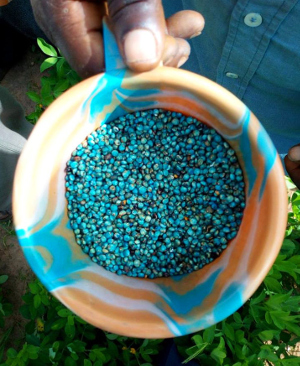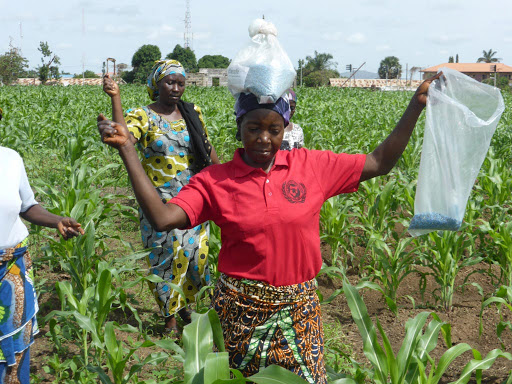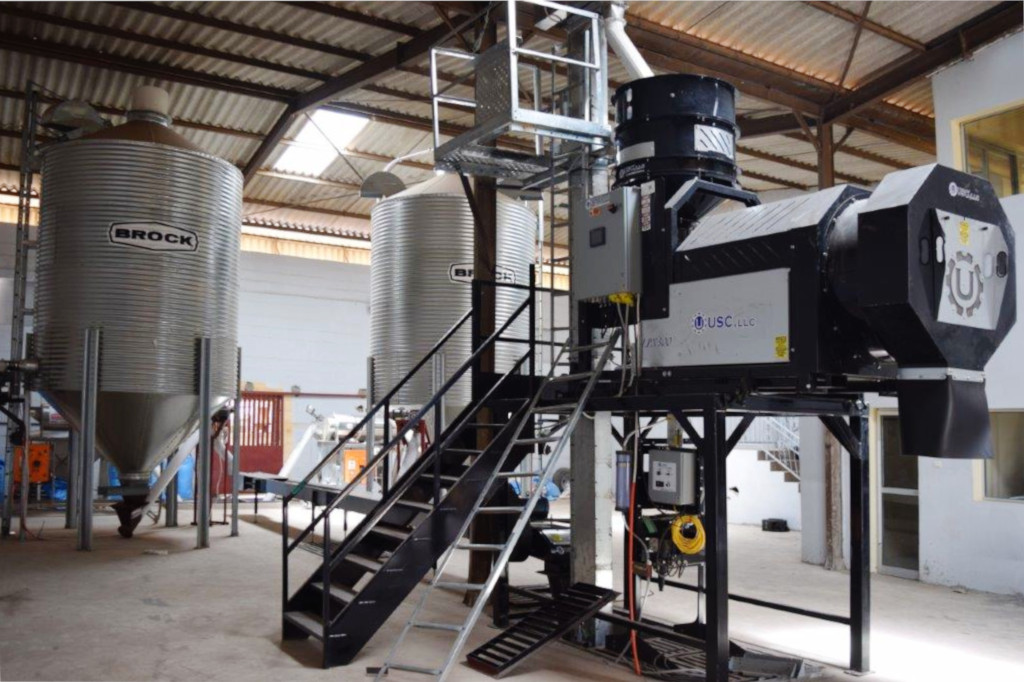Aflatoxin management (e.g. Aflasafe atoxic fungi)
Summary
Common species of the soil-dwelling fungus Aspergillus flavus infest crops that are grown on farmer fields and produce a highly toxic, cancer-causing poison called “aflatoxin”. There is widespread and severe aflatoxin contamination of key staple crops, animal feeds and processed foods across Africa owing to conducive weather conditions, presence of extremely potent fungal strains, and substandard post-harvest handling and storage. In Africa, there are particularly large problems with aflatoxin in maize, groundnut, cassava, sorghum and rice, among others. When contaminated food is consumed by humans or livestock the aflatoxin accumulates inside the body and causes major damage to organs and blood. This toxic tragedy causes 30% of liver cancer in people across Africa, and makes us weaker against other diseases and stunts children’s growth. Animals like cows, pigs and chickens get sick for the poison, and their milk, meat and eggs can get contaminated with high levels of aflatoxin. The silent aflatoxin pandemic in Africa has massive economic impacts by making food unfit to eat or trade, robbing humans of health, and stunting and killing farm animals. Biocontrol technologies for aflatoxin exist that make use of natural competitors rather than chemicals, and have been safely and effectively adopted elsewhere in the world on large areas of farmland for more than a decade. Aflasafe® is a made-in Africa product that cuts aflatoxin levels in food, and is cheap and cost-effective.
About the Solution
Biocontrol technologies for aflatoxin, like Aflasafe®, use harmless types of the fungus Aspergillus flavus which do not and cannot ever produce the toxin. As cousins to the poison-making species of fungus, the atoxic types occupy the soil and crop where they outcompete the poisonous strains, keeping them from getting a foothold. Aflasafe® products are sophisticated in that they use four different strains of Aspergillus, thus having multiple actors with different strengths to fight together. The particular strains in Aflasafe® are native to African countries and very common in the environment, meaning the balance of microbial ecosystems is not disturbed. The atoxic fungi are coated on ordinary sorghum grain for transferring the biocontrol agents to farmer fields where these are broadcasted before the start of the reproductive stage of crops. Aflasafe® stops contamination of food up to the point where it reached your plate since it is carried along with grains during transport, storage and processing. Biological control technologies against aflatoxin work best in combination with other post-harvest practices such as proper drying and storage, but also perform under poor conditions such as damp storage.
Preventing food contamination by aflatoxin through the introduction of natural competitors of poisonous fungi is suitable for all types of agricultural production areas in Sub-Saharan Africa. Since the approach of Aflasafe®, and other biological products for aflatoxin management, is based on the use atoxic fungal strains that naturally occur in African regions the technology is well adapted to local conditions, including heat and drought. Aflasafe® products have a special mixture of fungal strains that is tested over several years in various parts of a country, and only strains that cut aflatoxin across the board are selected. Applying biological control products on farmer fields is sensitive to weather conditions, but even if drought strikes, the spores of atoxic fungi stay alive and take off later once they get a bit more water.
The active ingredients of Aflasafe® are strains of the fungus Aspergillus flavus which do not produce aflatoxin. Combinations of four strains are carefully tailored for each country by screening thousands of candidates obtained from local environments. Each strain is subjected to extensive field testing to ascertain they are physically incapable of producing aflatoxin. For Aflasafe® sorghum grains are used as carried for the spores of biological control agents are killed by roasting, which ensures they cannot sprout or carry any other microbes with them. A small amount of maize starch is mixed with spores to ensure they stick onto the surface and get delivered where they need to be. The sorghum grain acts as a food source for the atoxic fungi when applied to the field and water gets in contact. A blue food colouring dye is added to distinguish Aflasafe® from other sorghum for food or feed use. Carrier materials that are cheaper than sorghum grain, such as cassava peel waste, are being tested.
Aflasafe® products need to spread within crop stands 2-3 weeks before the onset of the flowering stage, which can be done by hand throwing handfuls onto the fields, or with tractor-mounted spinners or side-dressers. Farmers need to apply Aflasafe® to their crops early so the poison-making fungi cannot get a toehold. Knowing when crops start to develop flowers is a tricky aspect of using Aflasafe® meaning that farmers have to carefully monitor the growth of stands. Applying the biological control products should coincide with rainfall and moist soil in order for populations of atoxic fungi to get well established. Using Aflasafe® is highly effective in conjunction with grain banking schemes where farmers set up their own marketing associations to inspect, bulk, store and trade maize or groundnut. This strategy allows them to sell produce for top prices to larger-scale buyers, such as millers, but also take greater control over their local food supply and sell small quantities for reasonable prices during grain shortages.
Commercialization
Commercially available
Solution Images
Institutions




